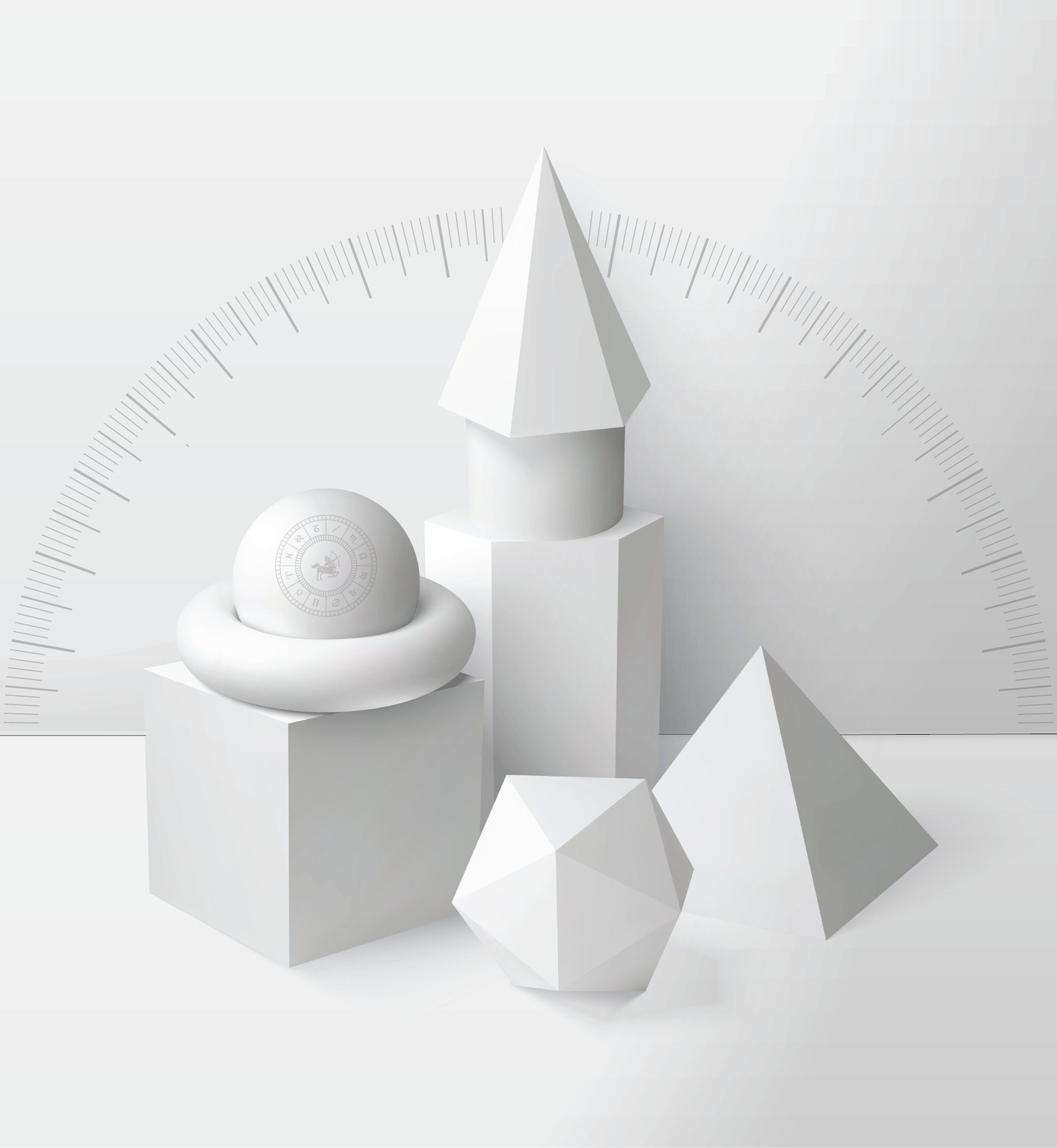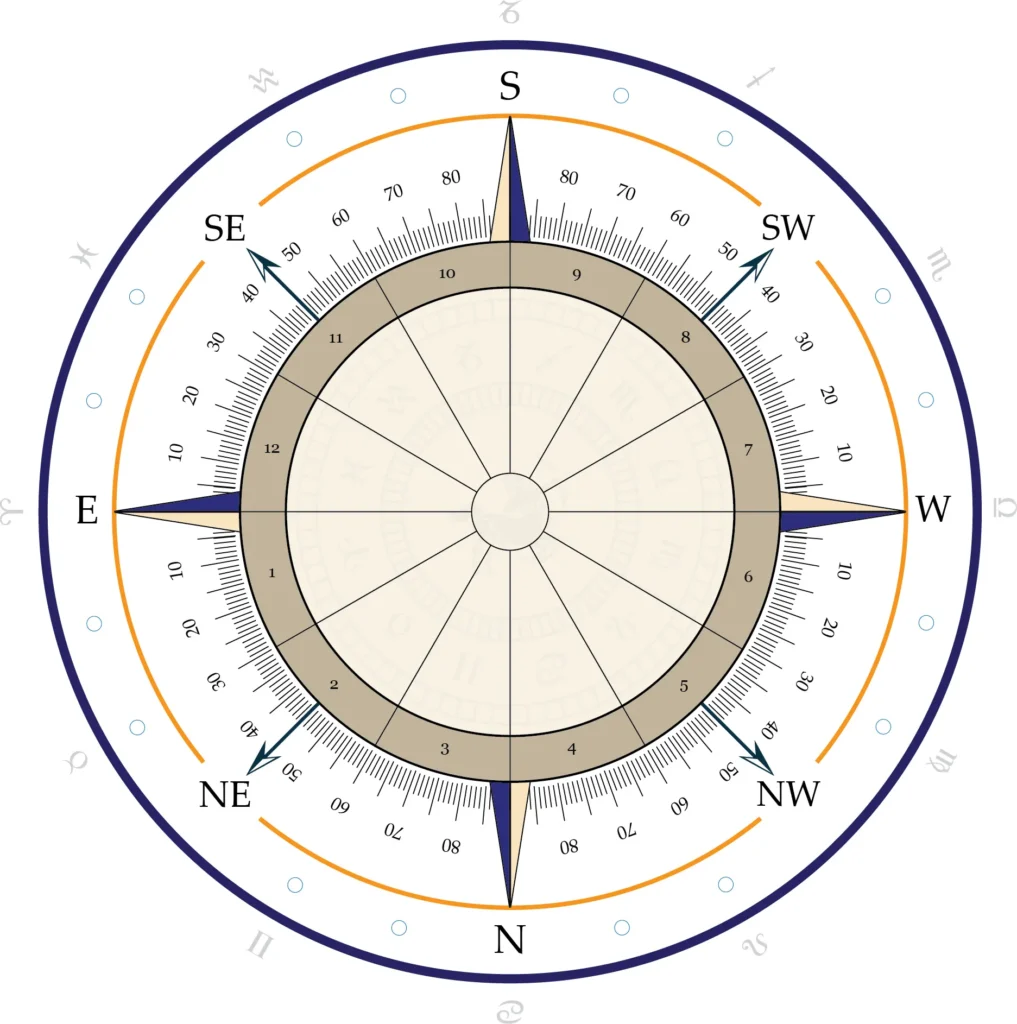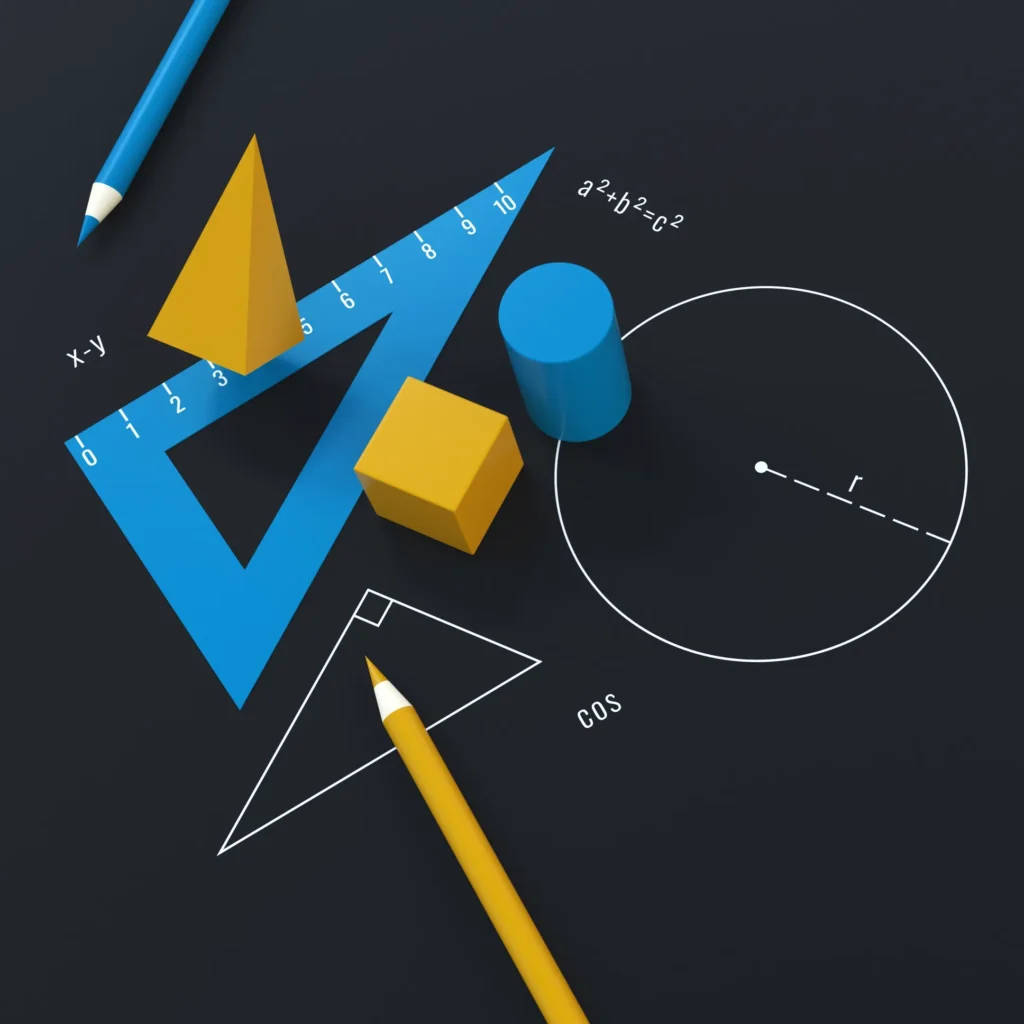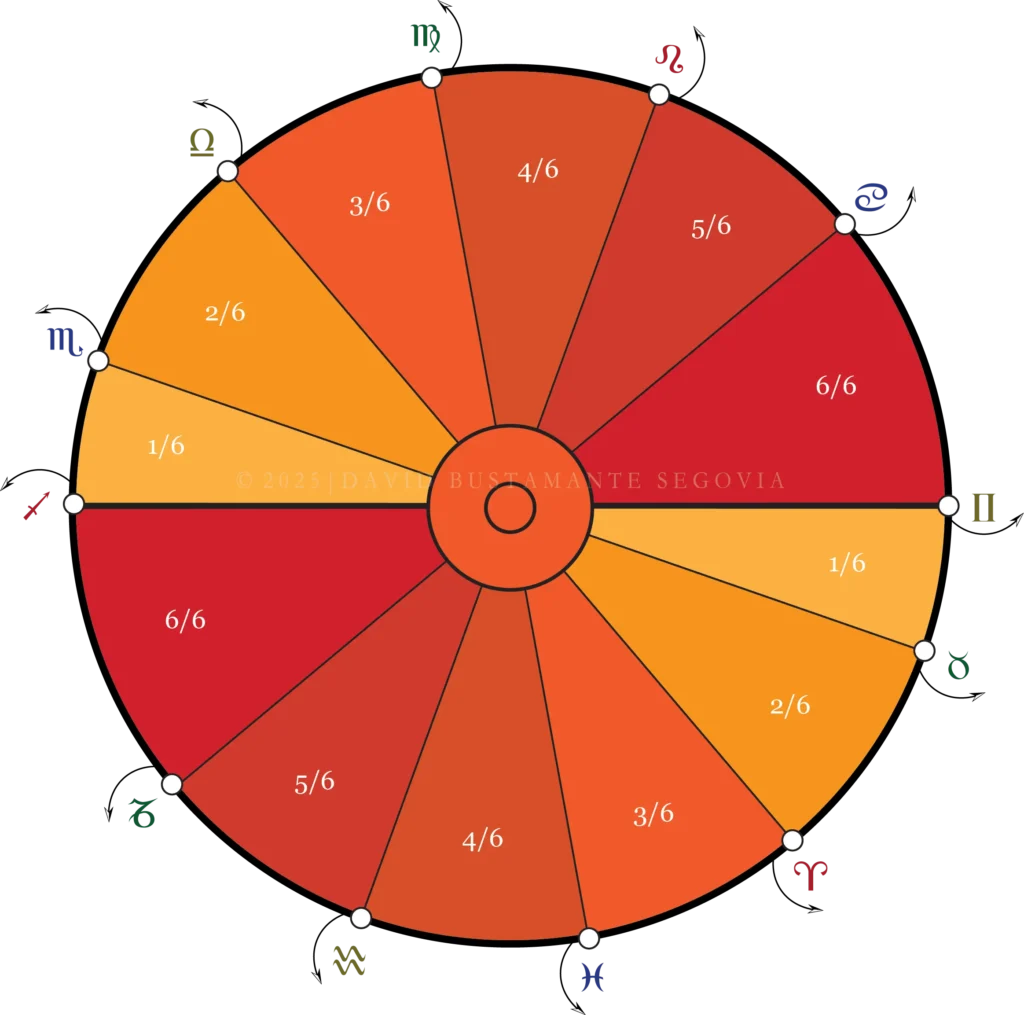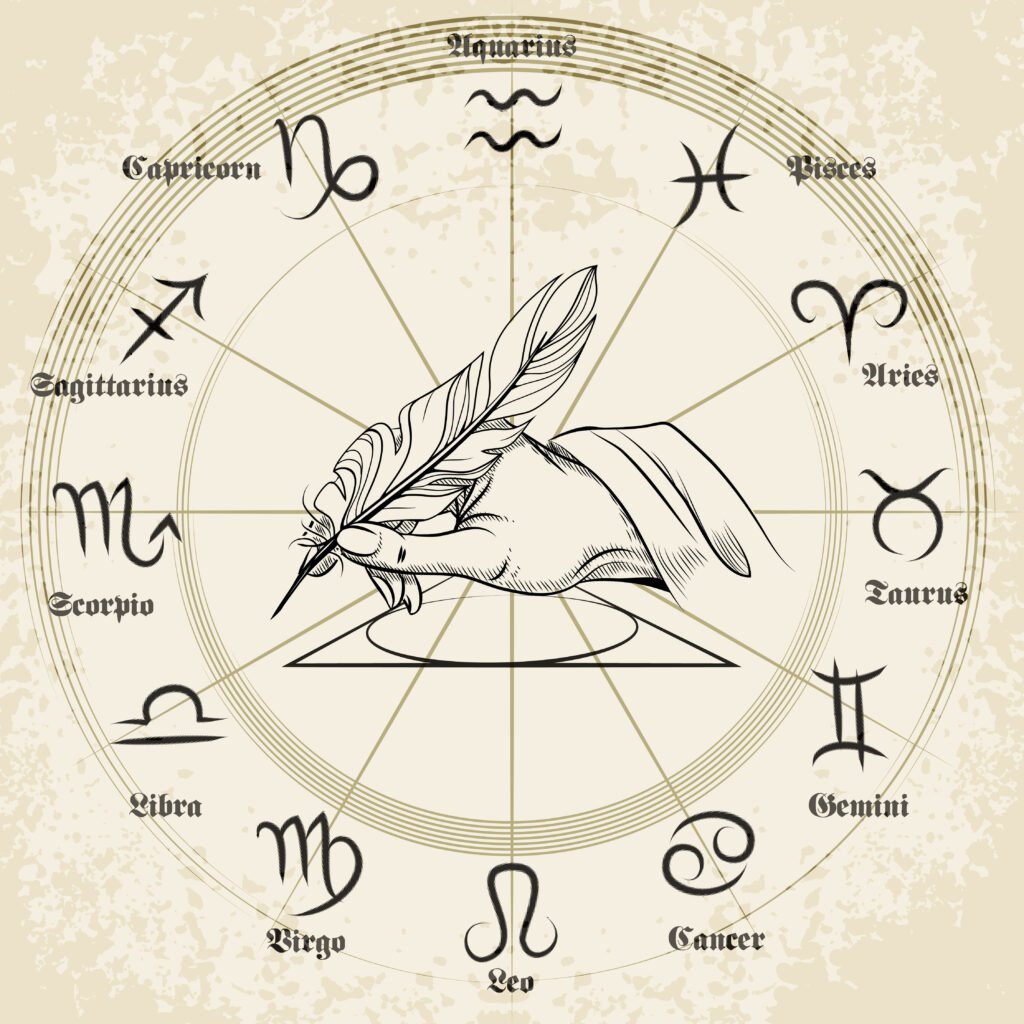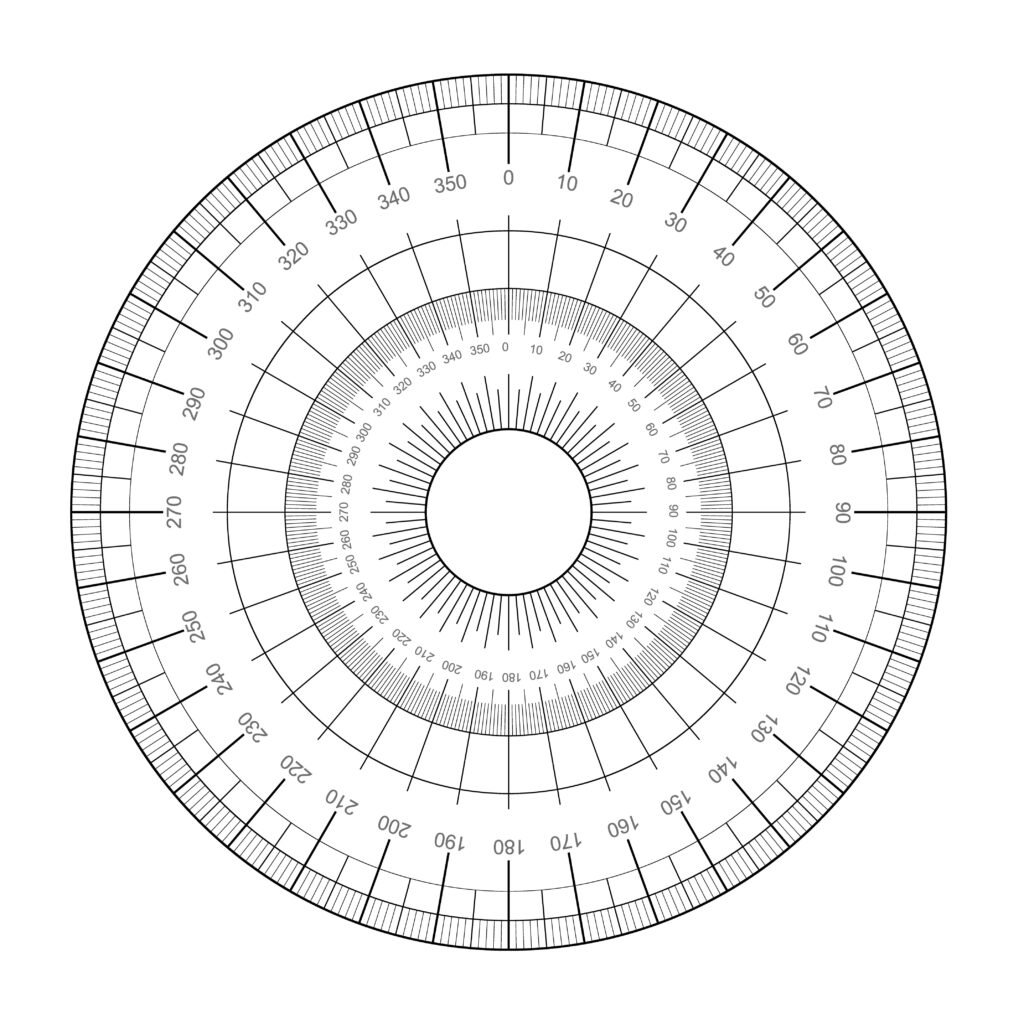
Have Holden, Rootjes, and Others Gotten it Right? Five Depictions
Reading about a method of house division is more or less the same as playing telephone tag (or broken telephone), game in which messages are whispered from person to person for the original and final messages to be compared thereafter. Most authors have incurred descriptive errors, but no description has had the greater amount of errors than that of the Placidian mechanism of action, that is, the method of house division popularised (not conceived) by the Benedictine monk Placidus of Titis (1603-1668), inspired by the primary directions of Ptolemy (second century). After all, it is the same method with two different applications: whereas the one regards prognoses, the other horoscope measurement or construction (i.e. erecting the chart). Brilliant English practitioner and talented drummer Michael Wackford argued (2006): “Unfortunately, the standard definitions of the house system that bears Placidus name have often been repeated incomprehensibly (or wrongly), and some authors, in misleading themselves as well as their readers, have caused several corrupt variations to gain currency.”
One cannot ignore—nor allow ourselves—errors of description about the very tools we employ. How, then, can we teach them (even if software technology will conduct all measurements or calculations)? Many, if not most, even confuse or conflate Placidus with either Alcabitius or Koch in their descriptions of the Placidus method of house measurement. To say it briefly, because all three enforce the same principle, which is to trisect a certain total amount of time elapsed from the horizon to the midheaven, but each conducts said measurement with regard to a different zodiacal degree or to all simultaneously. Alcabitius (tenth century BCE) clings to that of the Ascendant. Koch (1971) clings to that of the Midheaven. Placidus (second century or the seventeenth) does not cling to any one degree in particular, but all. It is naturally unbiased.
Let us see some of many errors.
FIRST | The Astrological Dictionary
Here is an almost completely accurate description of the Placidus method of house measurement, by — according to The Astrological Dictionary — Claire Rootjes [1]:
- “The Placidus House System is a system of house division that utilizes the movement over time on the ecliptic, or the sun’s apparent path through the sky. Each degree of the zodiac has a diurnal arc, i.e., how far it moves in a day. This, divided in two, becomes the point of the meridian or midheaven. The Placidus system then measures, for a specific time and location, how far a degree moves when it has traveled 1/3th of its diurnal movement from Ascendant to Midheaven, and this becomes the cusp of the 12th house. How far it has moved when it has travelled 2/3rd of its diurnal movement becomes the cusp of the 11th house, and so on.” (Highlight is mine)
Everything was accurate until it no longer was, that is, until an «it» was employed, for it is no longer each third of «that» degree which interest us or that we wish to measure, but the thirds of another, different degree, hourline, diurnal arc, or timeline, namely, two thirds of the degree occupied by the 11th House cusp. The ascensional time of this degree (say, 26º Gemini) is different from the degree of the 12th House cusp (say, 00º Leo). The same will be true for all cusps. Each sixth of the diurnal arc (i.e. each Placidian cuspal degree) represents a different ascensional time, the path travelled by a different zodiacal degree, which alludes to the position of the sun in the local sky if it had occupied that degree. In other words, Placidus would not measure a particular rising degree, but all in a simultaneously uninterrupted fashion.
Each Placidian cuspal degree will necessarily appear two seasonal hours — of that degree — later in the following house cusp. You are not to expect that the degree of the ASC or that of the MC will appear in the next house cusp two seasonal hours of a different degree later, but of the seasonal hours of their degrees. In fact, when we measure the seasonal hours of a chart manually, these apply to the degree occupied by the sun only (because we look to determine the amount time of sunlight available during that day, nor another day, which would imply another degree).
This is the reason for which each house does not measure an equal amount of time (many confuse the proportional feature of seasonal hours with the time width of a Placidian house). Hence the mathematical challenge or the triangulation inherent in the measurement, as Cochrane has implied.
While all house systems will agree upon the four fundamental cuspal degrees (ASC-DES, MC-IC), the method of rising times (i.e. Placidus) did not necessarily measure these trigonometrically (consonant with a spatial method), but in the same way that it measured the intermediate cuspal degrees, that is, physically, which is consonant with the Einsteinian notion of spacetime, also consonant with what we know as «proper time», appropriateness that, in this case, regards or makes reference to the ascensional time of each zodiac degree, not of a same zodiac degree, as in the case of Alcabitius (ASC), or Koch (MC). This is because each degree carries “its own clock” or “worldline”.
To understand this (physics) better, see — theoretical physicist — Sean Carroll’s “Space, Time, and Motion” (2022). Dutton, Penguin Random House” and “Time Dilation and […] Why the Placidus Measurement of Astrographic Regions is Compatible with Relativity Theory” (Bustamante, D. 26 September 2024. Montgomery, TX).
You may also find much more comfortable to understand the above by simply downloading this brief presentation prepared by us: “Illustration of the Placidian Mechanism of Action”.
SECOND | Ralph William Holden
Let us now turn the attention to Holden’s description of the Placidus method as it appears in the Raven Dreams Press 2023 edition (reprint from 1977 and/or later publications).
Holden seems to provide us with an accurate conceptual description in those first pages wherein he focused on Placidus, that is, from page 120 to page 123 (see, especially, the last paragraph before the last in page 122), although he should have employed more clarity, one could say. Moreover, in page 123, he rightfully brings a false critique of the method of measurement set forth by Colin Evans, who wrote, according to Holden (Chapter VI of Evans’ New Waite’s Compendium of Natal Astrology): “This system is therefore based upon artificially equalised subdivisions of the naturally unequal amounts of time a degree of the zodiac spends in each quadrant”.
Evans (not Holden) here seems to have confused Alcabitius (even Koch) with Placidus. However, later, Holden (not Evans), by page 178, seems to have forgotten about the description of Placidus he himself made in pages 120-123, and starts confounding Placidus and Alcabitius. Take, for example, the following two consecutive sentences where he deliberately seems to have wanted to distinguish Placidus from Alcabitius, or vice versa, and described one only (Alcabitius) instead in two different ways:
- “In Placidus the time for the rising degree to become the Midheaven is noted; trisected; and the times so found become the times at which the rising degree is the cusp of houses 12, 11, and 10. In the Alcabitius system the time for the rising degree to become the Midheaven is likewise noted; trisected; but now the degree rising at these times is the cusp of houses 12, 11, and 10.” (p. 178. Highlight is mine)
He would seem to have described the same concept (Alcabitius) with different words, or rather more specifically in the second paragraph.
In this same page, 178, when Holden concludes that Placidus is preferred, also talks about it making more sense because it traces the “rising degree”. Unless our dear Ralph meant *each* rising degree travelling from the horizon to the midheaven, he is in err. Because he writes “rising degree” only, he evokes Alcabitius more than Placidus.
Also, in page 133 of the same edition, he (R.W. Holden) writes:
- “In fact, what is happening is that we have to imagine the whole plane of the horizon to be ‘tied’ to that degree of the ecliptic, which is rising, being carried through the space of the celestial sphere and its position at regular intervals marking the house boundaries.” (Highlight is mine)
Here, he has said that the rising degree only will mark house cusps (Alcabitius, again, not Placidus). It would have been different if Holden had written: […] to be ‘tied’ to *different* degrees of the ecliptic, which are *rising simultaneously*, being carried through the space of the celestial sphere and *their* positions at regular intervals marking the house boundaries.
As for the first pages wherein he treats Placidus directly, although on point, he could have made a bit more emphasis on simultaneously coexisting hourlines or on different ascensional times. He provided two different ascensional times of two different Scorpio degrees (as an example only, of course) without explaining much more. His description is quite reduced, although accurate, yes.
It may be that Michael Wackford (1994) and Nicolás Varlotta (CABA Institute, Argentina) are the only astrologers I know to have understood in full the mechanism of action through which Placidus operates. Maybe, Rhys Chatham (2021) and Benjamin Dykes (2023) too (although Ben seems to discard it [2]). As for Ralph William Holden, one can neither confirm nor deny, for he sometimes describes it accurately, and sometimes he does not (in the same book).
THIRD | Astro Wiki (Astrodienst)
The description in the website (Placidus House System) reads (as of today, 29 October 2024):
- “The Placidus system of houses, also formerly known as the Ptolemaic Method, is a system that can be described as Time-proportional House System of Movement. This is in contrast to the space-based systems that are built on astronomical great circles, rather than on time curves. […] Each point on the ecliptic (the zodiac) traces out in the sky a so-called diurnal arc of its own – from its rising in the east to its setting in the west. It is determined for each degree of the zodiac, at a specific time and at its respective location, how much of its daily arc it has already travelled: the particular point, which has covered half of its path (i.e. which is crossing the meridian) is the Midheaven. The degree, which has at that moment completed a sixth of its path defines the cusp of house 12, another, which has completed two sixths, the cusp of house 11, etc.” (Highlight is mine)
If the reader went over the first two examples already, they’ll notice that the only feature in err here is to have first presented the method as a “time proportional” method (later, in pertinent part, describes its mechanism of action quite accurately, although it could have elaborated a bit further).
This is one of the reasons why many think of Placidus houses as being equal in time size. They are not. Although we understand perfectly why we would regard it as such (proportional), and elsewhere as the method of planetary hours [3], we’d rather call it the unequal times or seasonal times method of house division, or the timekeeping method of house division, or the sun times method of house division, reason for which any Placidus-measured cuspal degree will necessarily appear in the subsequent house cusp exactly two unequal or seasonal hours of that degree only (which represents a specific date or solar footprint) later. Because unequal seasonal hours (axial tilt) are the consequence of the method, it may help regarding the method as the relative times method also, that is, so as to avoid the common confusion according to which Placidus measured houses have the same time size (they do not).
In a Placidian measurement, each sixth of the diurnal arc (or third of the diurnal semiarc) represents the path travelled by a different zodiacal degree (as said before). Therefore, each length of time constitutes one, two, three, four, or five sixths of the time that would have elapsed since the sun’s rise if it had occupied that different degree of the ecliptic. When we measure the houses of an astrograph, the sun does not occupy all degrees simultaneously, but these bear with them the time established by the sun the first time it rose or dawned with them during the year and so continue to behave in the same manner. We thus measure the time of all in a simultaneously uninterrupted fashion for the purpose of determining the cusps of the houses as precisely as possible. Such measurement, however, is not trigonometric, but physical.
Alcabitius and Koch, for their part, are both methods of convenience only, that is, two different ways of abbreviating the Placidian exercise, so as not to bother with measuring the ascensional times of the intermediate cuspal degrees, which is why both methods assign to these a third of the amount of time of the only degree they measure: ASC, in the case of Alcabitius, and MC, in the case of Koch. Therefore, while Koch- and Alcabitius-measured houses have the same time size, Placidus-measured houses do not. They are relative. It is not, then, a time proportional method as much as a timekeeping or relative times method.
FOURTH | Seasoned practitioner
Recently, someone wrote the following description and, hopefully, will have corrected it when (a) they realise it, (b) when someone — besides me — mentions it to them, or (c) if they read our current article.
- “Placidus would have looked at the original chart with 25 Scorpio on the MC and wondered what was the diurnal semi-arc that allowed 25 Scorpio to have risen to the MC in the original chart. Following the principles of Alcabitius, he would have calculated that 25 Scorpio was on the eastern horizon (Asc) at 8:43 UT and rose to the MC by 12:58 PM UT — a difference of 4h 16m (diurnal semi-arc of 25 Scorpio). One-third of the diurnal semi-arc of 25 Scorpio is 1h 25m 20s, so that advancing the chart from its original time by intervals of 1:25:20 will put 25 Scorpio on the 12th cusp, 11th cusp, and MC respectively.”
This is clearly, without question, a description of the measurement of Koch (a good one, actually, even though it fails to mention the two degrees that would now appear at the ascendant after said two advancements will be assign the eleventh and twelfth house cusps). The webpage we previously critiqued, AstroWiki (Astrodienst), got it right as well. Their description of the Koch method is almost identical to the paragraph above.
FIFTH | Urania Trust
They proved, amply so, to have comprehended the method when having written:
- “The calculation of the cusps starts in the same way as Alcabitius: the time for a given position on the ecliptic to move from being the ascendant to being the MC is noted and this time trisected. The calculation then differs from Alcabitius. These intermediate times are the times at which the given ecliptic position will become the eleventh and twelfth house cusps. Note the important difference; we do not calculate the position of the cusps for the time of the natal chart. We calculate the time of a chart in which the given position will be the relevant cusp. To calculate the position of these intermediate cusps in the natal chart, we need to find the time of an earlier chart whose ascendant position will become the relevant cusp at the time of the natal chart. If this sounds complicated, an example should help.”
Although more clarity could have been employed as follows: «These intermediate times are the times at which two different ecliptic degrees will become the eleventh and twelfth house cusps after having risen or touched the horizon. Note the important difference: these constitute two different trisections, for they represent two different ascensional or seasonal times. For the purposes of revealing these two degrees, however, we need find two different times of two different earlier charts whose ascending degrees would have become the relevant cusps (twelfth and eleventh, respectively) at the time of the birth of interest.»
In any case, one does not understand how or why, after having completed an accurate depiction — and described the procedure correctly as well in the paragraphs of the example — would they close with an accurate description of Alcabitius to summarise the Placidus method (?):
- “There is another way we can think about Placidus cusps that helps understand the idea behind the system. We start by thinking about the time a specific point on the ecliptic takes to get from its rising as the ascendant to its culmination as the MC. This time can be divided into three. For the first third of the time from ascendant to MC, the point is in the twelfth house. For the second third of the time, it is in the eleventh house, and in the last third of the time, it is passing through the tenth house.”
Why not say, instead, that we can think of Placidus as the same as Alcabitius as long as we remember that we need conduct the same exercise for two additional different degrees? To find these, we need theorise quite a bit back in time relative to the hour and minute of birth; or triangulate, should you prove to be good at it.
Appendix. On length contraction (otherwise wrongfully known, perhaps, as ‘house distortion’) and polar horoscopes
These two arguments constitute nothing but a false claim against some methods of house measurement, including Placidus. Let it be said (someone has to): any method of house division can fail within the polar regions — and outside of them — on the basis of your definition of said failure only. Your definition may be either on point or the product of a confusion. Should it regard the surface upon which one erects that chart (polar regions, for example), our money is on confusion. Should a house measurement method “fail” or have a “problem” or “limit”, it will have nothing to do with the region of the Earth upon which you erect the chart. In other words, a method of house measurement does not ‘fail’ or has a ‘problem’ or ‘limit’ because it is conducted in a polar region. It fails on account of its own design, and by that only. That is, it can and will fail to show the sky with the precision or accuracy desired or claimed anywhere on Earth.
(One may also portray this by saying that it is spherical trigonometry that fails in polar regions. Because hourlines cannot be measured with said tool, employing the tool in polar regions to make out Placidian house cusps constitutes only a makeshift of the method, not the method itself, which is essentially physical.)
Michael Wackford has both adequately and sufficiently explained why this is so, as he has a series of articles on the matter. Nonpolar skies challenge our talent as interpreters only (just as much as it would challenge the talent of a polar astrologer if there were one that does not oftentimes see a nonpolar horoscope). The problem is ours, and ours only. Always has (arrogance inherent in ignorance, if you’ll excuse me).
You may consult Michael’s observations here (we are currently developing an essay on polar horoscopes by resuming from where dear Michael left off):
- The Polar Horoscope: https://www.skyscript.co.uk/polar1.html
- The Polar Houses: https://www.skyscript.co.uk/polar2.html
- The Polar Arcs: https://www.skyscript.co.uk/polar3.html
- The Polar Meridians: https://www.skyscript.co.uk/polar4.html
Length contraction, in turn, is not to be considered a distortion or defect, failure or problem in any way whatsoever. To understand why from a physical standpoint, please see, again, theoretical physicist Sean Carroll’s “Space, Time, and Motion” (2022). Dutton, Penguin Random House and “Time Dilation and […] Why the Placidus Measurement of Astrographic Regions is Compatible with Relativity Theory” (Bustamante. 26 September 2024) Or, simply, study special relativity for a few minutes on reliable sources from YouTube.
___________________
[1] Despite my best efforts, I was unsuccessful in finding the source.
[2] Benjamin Dykes has found the Placidean mechanism of action weird or strange, I was told. Should this be true, no, dear — and utmost judicious — Ben: it is naturally relativistic. Therein lies its profound beauty! Its beauty rests upon its naturalism, and its naturalism bears its utmost accuracy or precision. It matters not if each cuspal degree behaves as an angle on its own because it is by all accounts. For the purposes of interpretation, however, we (the humans, not nature, that is) take them to be secondary or less fundamental than the four major cusps, and rightfully so, but we still need determine where does the margin of action of any planet within a quadrant begins and ends, and cannot therefore read or otherwise interpret a sky that has not been measured correctly or accurately (even if the differences are minimal, as they sure will become great when working with the first or last portion of a sign, especially at latitudes far from the equator, for the ruler of the house will be another).
[3] “Planetary” is not as accurate as “seasonal” or “solar” for the purposes of describing said hours, for only with the sun does said rhythm or mechanism works ‘like a charm’. Cochrane has made it fun to visualise in his video (an animation of said displacement and an almost animation of the Placidus method).
